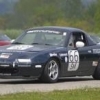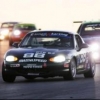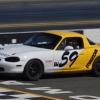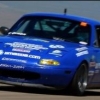Steve,
All good points. We have been doing our testing on a Dynapac and the numbers are right in line with the numbers Jim Drago is showing for his Dynojet. I don't consider the Dynapac we currently are using to be high but I have seen much lower numbers at another Dynapac facility.
Some of this could be weather station issues but I would be more inclined to be looking at load cell output (calibration). I like the Dynapac because it eliminates the variables of the vehicle connection to the Dyno it'self. Tire pressure/sidewall factors and slip between the drum (tie down issues) are eliminated. Remember, the only thing the Dyno is supposed to be measuring is the torque output for accelerating the vehicle. Eliminating or avoiding any variation to the process of measuring and collecting torque output is the key to consistent and repeatable results.
Dyno variation is a big issue to consider and can make the money spent on testing a total waste while also causing confusion and incorrect conclusions.. You need to be able to measure change with a high degree of confidence which means results need to be repeatable hence the need for correction factors but knowing and having your uncorrected torque values are insiteful.
To help in doing this we try to limit the window of temperature, humidity and barometer conditions under which we test. Humidity is the one variable that is allowed to vary the most as we try to restrict the time of year/day for temperature ranges within a 20 deg (65-85F). range and Baro is mostly a function of site location but here again is easy to monitor for variation due to weather fronts. What weather condition variation we see is handled with the an SAE correction, just be consistent in the one you use. I like to work with the raw torque data and apply my own correction factors just to verify the numbers being generated.
Next is the variable in back to back pulls. This is generally the car it's self. Here you are dealing with engine and driveline temperatures which means properly stablizing the car as well as reasonable and possibly the Dyno itself. For this you need to repeat pulls with out any changes to narrow down natural run to run variability. This all takes time and adds to session costs unless you own the dyno. The next thing if you are really serious in your confidence in your conclusions is to run a second car. We have been running two cars back to back for every test session this year. If we change an engine in one we run the other car as a "reality" check on numbers. When doing this you can spot any outlier and can save on the hassle of having to change your car back to it's baseline configuration to verify your baseline.
So in summary what I am saying is use one dyno, limit the environmental conditions you test in, stabilize test conditions and run a check vehicle. Even with that you are still at the mercy of the condition and quality of equipment you are on, its accuracy of calibration/quality of sensors being used. Things like where the weather station picks up its readings no matter how good the station is it'self can introduce variation. How accurate is the dyno (load cell) and its calibration, is it totally free of any preload or alignment/friction issuses. If you use a shop that specializes in your particular vehicle (spec miata) chances are you can rely on their background data to help you have a high degree of confidence in the numbers you are getting but it is up to you to make sure you are aware of the obvious items that can cause variability are addressed to your satisfaction.
Rich




 Sign In
Sign In Create Account
Create Account











 Back to top
Back to top Report
Report























